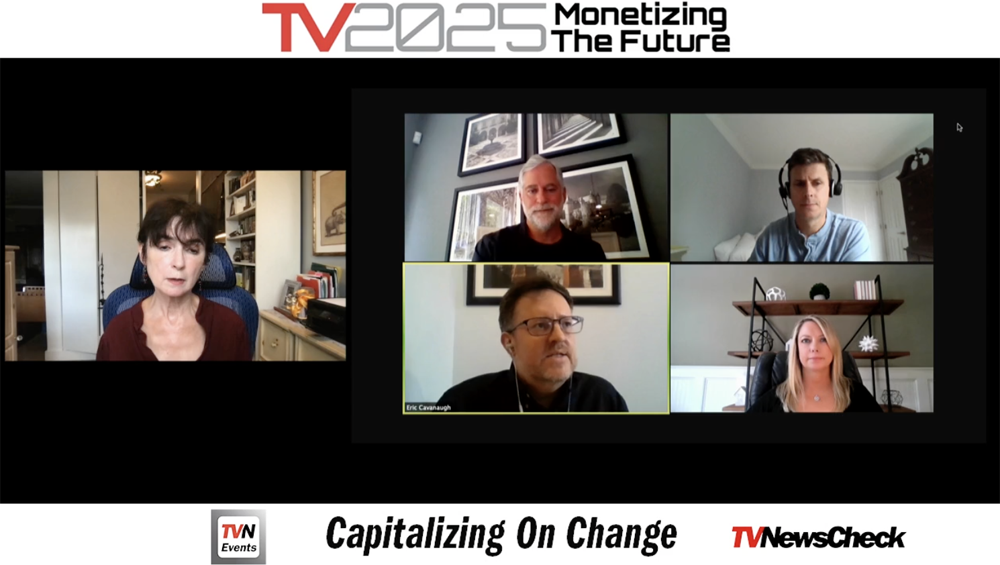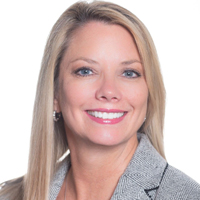
Ad Execs: Cutting Out Research Middlemen Is An Option

Audience measurement companies may be lining up to replace Nielsen as the primary source of TV audience data. But what if buyers and sellers could cut out the research middlemen completely? What if they could, essentially, do it themselves?
That possibility was discussed by top executives at one TV station group and three of the largest advertising agencies during a panel on data and spot TV at TVNewsCheck’s virtual TV2025 conference last week, which was moderated by this reporter.
While they gave a big thumbs up to Nielsen’s “impressions first initiative,” the panelists expressed concerns that relate to how transparent Nielsen has been when providing data, and the impending introduction of broadband-only homes into the research company’s local sample, which leaves buyers “going in blind.”
The session took place shortly after Nielsen’s national and local measurement products lost their accreditation by the Media Rating Council (MRC), which has audited the company’s research process.
Nielsen has vowed to improve its sample bases and provide more advanced data science to reflect new ways consumers are using media. But a host of its competitors are being considered in an industry-wide “beauty contest.” While Nielsen’s work to repair its sample from the darkest days of COVID has been noted and appreciated, the ad community’s patience with Nielsen, after years of complaints, has worn thin.

Jennifer Hungerbuhler
The potential for change was welcomed by all four panelists. “I think the speed and innovation that we need for video measurement is finally going to start happening. We’ve been talking about it for a really long time,” said Jennifer Hungerbuhler, Dentsu’s EVP, managing director, local video and audio investment.
“What’s most critical that can come out of this process of vetting new vendors, is that we need a transparent solution. We need something that is going to capture audience behavior, and something that’s going to be verifiable,” Hungerbuhler added.
There’s another related challenge: “The cost of these currencies has been escalating way past inflationary rates. If you look at the cost of currency as a percentage of sales, it’s far exceeded where it should be. I would also add that the cost of doing an MRC audit has continued to rise because of the complexity of it,” noted Frank Friedman, VP of consumer engagement, local media, The E.W. Scripps Co.
“If we’re talking about more big data sources, the amount of rigor that’s going to be involved in analyzing this and making sure that it is transparent is going to cost even more. We have our inflection points. How much are we going to spend on this? These companies that come to provide us solutions, there’s going to have to be a streamlining of that process,” Friedman added.

Eric Cavanaugh
But what if the transparency could be established in a different way? That question was posed by Eric Cavanaugh, SVP, data intelligence, Publicis Media. Rather than relying on a third-party research company, one possible solution is to “get the data from the publishers and the stations directly. Maybe think of that as an industrywide solution, as opposed to an outside company. Because potentially, that could be a more transparent and cost-reducing solution in the long term.”
Cavanaugh explained that would eliminate situations where audience measurement data that a seller and buyer have for a specific campaign don’t align. They’d have the same source.
Getting all interested parties to agree on a technical platform owned and run together is likely to involve a long and difficult process, said Brad Thompson, SVP, partner, integrated investment, UM Worldwide. “There are so many players, and we all have our unique business requirements and financial requirements. There are outside sources we have to deal with, like auditors.

Brad Thompson
“I am not saying we shouldn’t explore it, because I do think it’s fascinating. But you’re talking about getting consensus across a very wide spectrum of groups that are in this business, and that is going to take some work,” Thompson added.
In the more immediate future, Nielsen’s decision to move to an “impressions first” method of measuring local audiences was greeted with enthusiasm by the panelists. “If we can do away with conversions, that will be a fantastic day in the industry,” said Thompson, referring to the process of turning ratings into impressions.
However, another part of Nielsen’s recent news — that it was introducing broadband-only homes into the official local currency in January — was deeply concerning. “We’ve had to regroup twice to handle these delays,” said Thompson, referring to past announcements of BBO start dates that were called off at the last minute. “We are stuck in a position of not knowing how to price and negotiate. It’s very challenging.”
Buyers and sellers will have only one book of Impact data, from October — essentially a preview of the new BBO currency — before Nielsen makes it official in January. The older BBO Impact data produced by Nielsen over the last year can’t be used for planning and negotiation purposes, because it’s an apples-to-oranges comparison; it included local tune-in, which the new currency excludes, Hungerbuhler explained.

Frank Friedman
“We are already in the market buying 2022. By the time I get that October data, I’m going to be so far down the way. And that really makes me nervous because we’re essentially going in blind. It could have huge posting implications and reporting implications. So, it is an aggressive date to set,” Hungerbuhler said.
Friedman brought up another point of contention: “Nielsen is rightly examining its policies, but there is a lot that happened during COVID that we didn’t know about,” said Friedman. “There were changes in measurement that weren’t communicated to us. We need extreme transparency. Certainly, Nielsen has to run its business. But as we’re paying the bills for them to do so, we want to understand that data as it comes out.”
Friedman offers one example of something that Nielsen didn’t reveal: “We know for a fact that there were homes left in the sample that shouldn’t have been. You can argue the semantics of when Nielsen knew, but that fact is, we didn’t know. And we had a simulation done that showed there was undercounting of these metrics.”
To watch the video of this session, click here.
For more TV2025 2021 stories, click here.
































Comments (0)